-
 bitcoin
bitcoin $112715.707551 USD
-1.71% -
 ethereum
ethereum $4101.475385 USD
-3.01% -
 tether
tether $1.000644 USD
-0.02% -
 bnb
bnb $1207.619465 USD
-6.77% -
 xrp
xrp $2.501451 USD
-3.98% -
 solana
solana $202.947124 USD
-3.32% -
 usd-coin
usd-coin $1.000295 USD
0.04% -
 dogecoin
dogecoin $0.203884 USD
-4.47% -
 tron
tron $0.317154 USD
-1.72% -
 cardano
cardano $0.695009 USD
-4.43% -
 hyperliquid
hyperliquid $38.853961 USD
-8.23% -
 chainlink
chainlink $18.988674 USD
-4.64% -
 ethena-usde
ethena-usde $1.000233 USD
-0.03% -
 stellar
stellar $0.337050 USD
-3.63% -
 bitcoin-cash
bitcoin-cash $536.861728 USD
-1.28%
How can I calculate the liquidation price on KuCoin futures?
KuCoin's liquidation price is the point at which a leveraged position closes automatically to prevent further losses, calculated using entry price, leverage, and maintenance margin.
Sep 21, 2025 at 11:37 pm
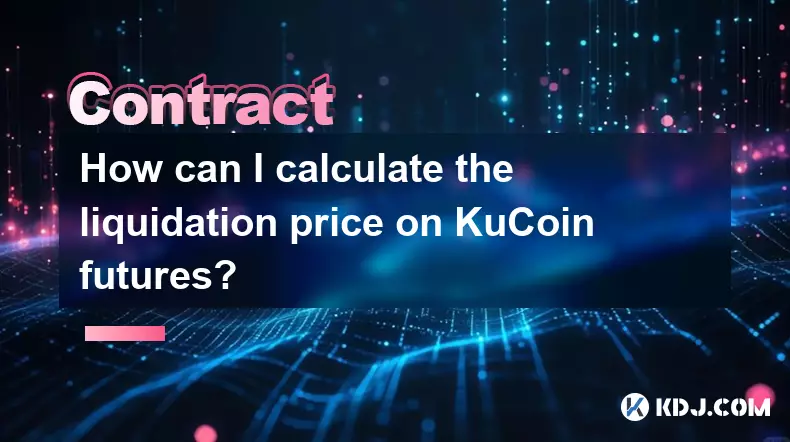
Understanding Liquidation Price in KuCoin Futures
1. The liquidation price on KuCoin futures represents the market price at which a trader’s position is automatically closed due to insufficient margin. This mechanism protects both traders and the exchange from excessive losses. When the mark price of an asset reaches this threshold, the system triggers a liquidation event.
2. Each futures contract has its own liquidation engine that continuously monitors the account balance, leverage level, and current position size. If the equity in a position drops below the maintenance margin required by KuCoin, the system initiates liquidation procedures. This process prevents negative balances and maintains platform stability.
3. Traders can view their estimated liquidation price directly within the KuCoin trading interface. It appears alongside key metrics such as entry price, unrealized PNL, and leverage settings. Understanding how this value is derived helps users manage risk more effectively during volatile market conditions.
4. The calculation differs slightly between long and short positions. For longs, liquidation occurs when the price falls to a critical point; for shorts, it happens when the price rises beyond a certain level. These thresholds depend on funding rates, fees, and the chosen leverage ratio applied to the initial margin.
Key Factors Influencing Liquidation Price
1. Leverage plays a central role in determining the liquidation price. Higher leverage reduces the buffer between entry price and liquidation point, making positions more vulnerable to sudden price swings. A 10x leveraged trade will have a much closer liquidation price than a 2x position with the same entry.
2. Position size affects the maintenance margin requirement. Larger positions demand higher collateral reserves, altering the liquidation dynamics. As the notional value increases, even small adverse movements can trigger early liquidation if margins are thin.
3. Funding payments impact the effective cost basis over time. While not directly part of the core formula, ongoing funding deductions or additions influence the available margin balance. Frequent negative funding can erode equity faster, pushing the liquidation price closer to the current market rate.
4. Market volatility indirectly shapes liquidation risks. During high-volatility periods, price slippage may cause actual execution prices to deviate from theoretical levels. KuCoin uses mark price rather than last traded price to prevent manipulation-based liquidations, adding another layer of complexity.
Manual Calculation Method for Liquidation Price
1. For isolated margin mode, the basic formula for a long position is: Liquidation Price = Entry Price × (1 − Initial Margin Rate + Maintenance Margin Rate). The initial margin rate equals 1 divided by leverage (e.g., 0.05 for 20x), while the maintenance margin rate is set by KuCoin based on contract tier.
2. For a short position, the formula adjusts to: Liquidation Price = Entry Price × (1 + Initial Margin Rate − Maintenance Margin Rate). This reflects the inverse relationship where rising prices threaten short trades. Both formulas assume no additional fees or funding impacts.
3. Cross-margin mode calculations are less transparent because shared equity across positions makes precise modeling difficult. However, the principle remains the same—when total account equity falls below the sum of all maintenance margins, partial or full liquidation begins.
4. Users must refer to KuCoin’s official documentation for exact maintenance margin percentages per contract type and tier. These values vary depending on whether the instrument is linear or inverse, and they scale non-linearly with increasing position size.
Frequently Asked Questions
What is the difference between mark price and last price in liquidation?Mark price is used to determine liquidation events to avoid unfair closures due to temporary price spikes or flash crashes. It is typically derived from a spot index plus a fair premium/discount. Last price reflects recent trades but can be manipulated, so relying on it alone would increase vulnerability.
Can I avoid liquidation by adding more margin?Yes, in isolated margin mode, users can increase their margin manually before reaching the liquidation threshold. This action raises the buffer between current price and liquidation level. However, this feature is unavailable in cross-margin mode where funds are pooled automatically.
Does KuCoin provide warnings before liquidation?KuCoin displays real-time risk indicators and sends alerts when positions approach dangerous levels. The health ratio bar turns red as the liquidation price nears the mark price. Traders should monitor these signals closely, especially during low-liquidity periods.
Disclaimer:info@kdj.com
The information provided is not trading advice. kdj.com does not assume any responsibility for any investments made based on the information provided in this article. Cryptocurrencies are highly volatile and it is highly recommended that you invest with caution after thorough research!
If you believe that the content used on this website infringes your copyright, please contact us immediately (info@kdj.com) and we will delete it promptly.
- XRP Price Prediction: Weekend Rollercoaster or Rally?
- 2025-10-12 08:45:16
- Bittensor (TAO): Super Bullish Signals Point to Potential 2x Rally
- 2025-10-11 10:25:12
- Silver Price Correction: Navigating the Dip & Identifying Key SEO Keywords
- 2025-10-11 10:25:12
- Decoding Crypto Trends: Bittensor's Bull Run, Cardano's Dip, and LivLive's Presale Buzz in 'Uptober 2025'
- 2025-10-12 08:45:16
- MoonBull: The Crypto Meme Coin Promising 1000x Gains?
- 2025-10-11 10:30:01
- Crypto Payroll Revolution: Stablecoins, Altcoins, and the Future of Salary Payments
- 2025-10-11 10:30:01
Related knowledge

How to calculate the ROI for Ethereum contracts?
Oct 09,2025 at 04:36pm
Understanding Ethereum Contract ROI Basics1. Return on Investment (ROI) for Ethereum contracts begins with tracking the initial capital deployed into ...

How to find arbitrage opportunities between different Bitcoin contracts?
Oct 14,2025 at 11:18pm
Finding Arbitrage Opportunities in Bitcoin Futures Markets1. Monitor price discrepancies across exchanges offering Bitcoin futures contracts. Differen...
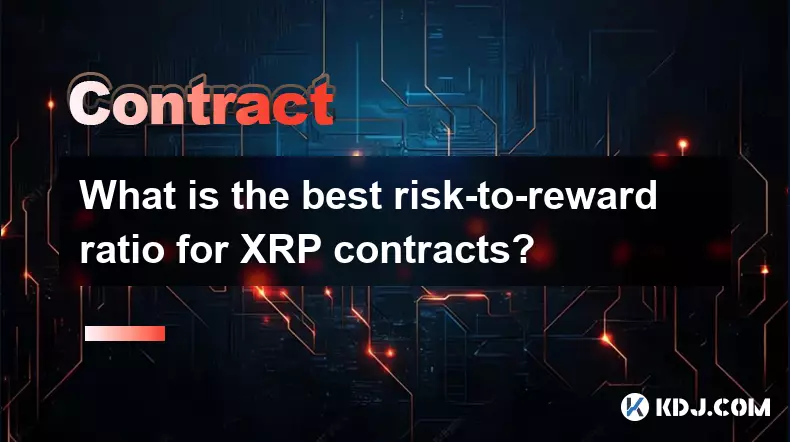
What is the best risk-to-reward ratio for XRP contracts?
Oct 11,2025 at 04:18am
Understanding Risk-to-Reward in XRP Futures Trading1. The risk-to-reward ratio is a fundamental metric used by traders to evaluate the potential profi...
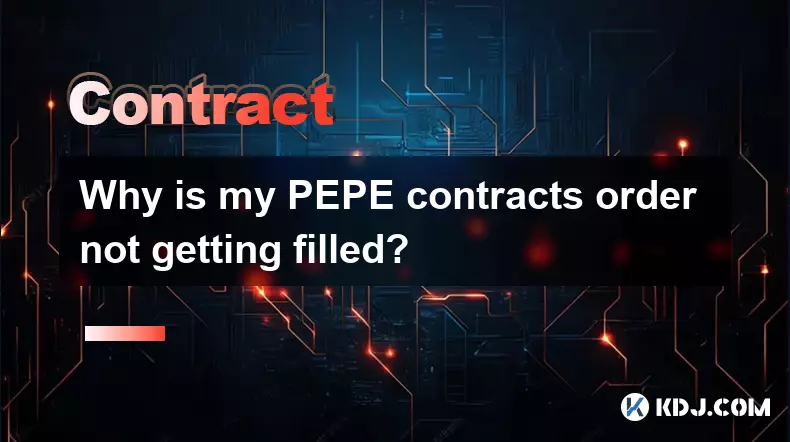
Why is my PEPE contracts order not getting filled?
Oct 12,2025 at 06:01pm
Understanding Liquidity Issues in PEPE Contracts1. Low liquidity is one of the primary reasons a PEPE contract order may not get filled. Many meme-bas...
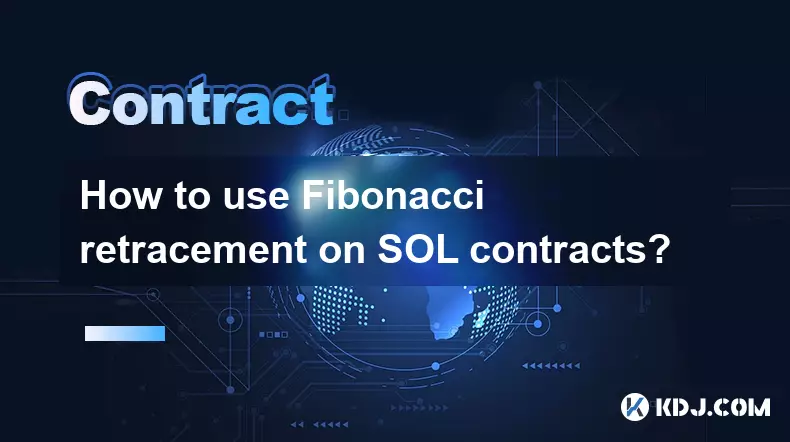
How to use Fibonacci retracement on SOL contracts?
Oct 14,2025 at 02:36pm
Fibonacci Retracement Basics in SOL Trading1. Fibonacci retracement is a technical analysis tool used to identify potential support and resistance lev...

Is it better to trade Dogecoin contracts or spot?
Oct 12,2025 at 04:54pm
Understanding Dogecoin Spot Trading Mechanics1. Spot trading involves the direct purchase and ownership of Dogecoin at the current market price. Trade...

How to calculate the ROI for Ethereum contracts?
Oct 09,2025 at 04:36pm
Understanding Ethereum Contract ROI Basics1. Return on Investment (ROI) for Ethereum contracts begins with tracking the initial capital deployed into ...

How to find arbitrage opportunities between different Bitcoin contracts?
Oct 14,2025 at 11:18pm
Finding Arbitrage Opportunities in Bitcoin Futures Markets1. Monitor price discrepancies across exchanges offering Bitcoin futures contracts. Differen...

What is the best risk-to-reward ratio for XRP contracts?
Oct 11,2025 at 04:18am
Understanding Risk-to-Reward in XRP Futures Trading1. The risk-to-reward ratio is a fundamental metric used by traders to evaluate the potential profi...

Why is my PEPE contracts order not getting filled?
Oct 12,2025 at 06:01pm
Understanding Liquidity Issues in PEPE Contracts1. Low liquidity is one of the primary reasons a PEPE contract order may not get filled. Many meme-bas...

How to use Fibonacci retracement on SOL contracts?
Oct 14,2025 at 02:36pm
Fibonacci Retracement Basics in SOL Trading1. Fibonacci retracement is a technical analysis tool used to identify potential support and resistance lev...

Is it better to trade Dogecoin contracts or spot?
Oct 12,2025 at 04:54pm
Understanding Dogecoin Spot Trading Mechanics1. Spot trading involves the direct purchase and ownership of Dogecoin at the current market price. Trade...
See all articles





















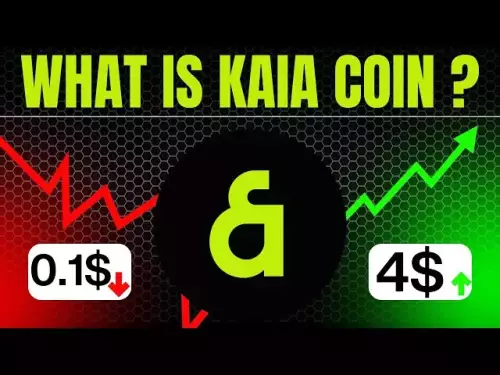




![Staking ATH: How To Stake $ATH in October 2025 with 523% APY — [Step-By-Step Guide] Staking ATH: How To Stake $ATH in October 2025 with 523% APY — [Step-By-Step Guide]](/uploads/2025/10/15/cryptocurrencies-news/videos/staking-ath-stake-ath-october-apy-stepstep-guide/68eef94d80903_image_500_375.webp)















































